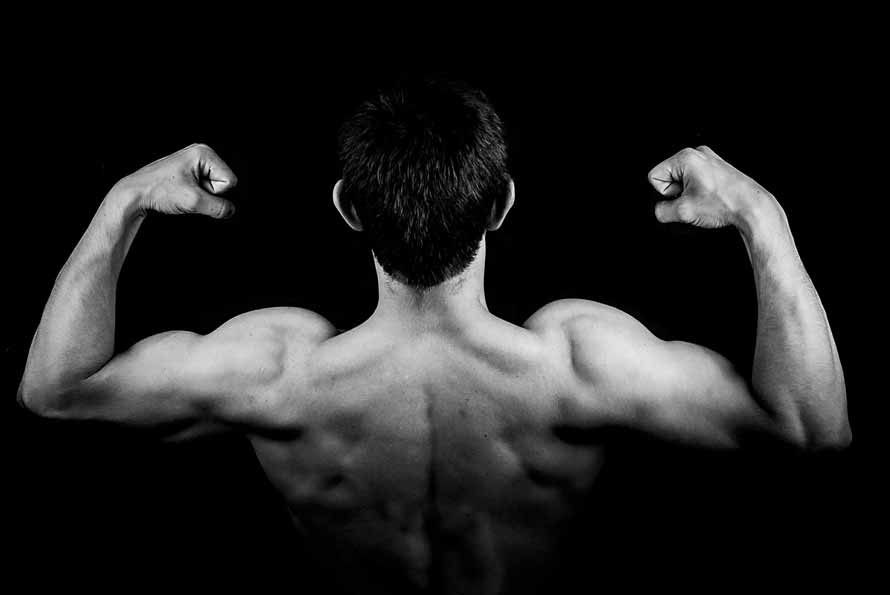This article is excerpted from an article titled ‘Lifestyle and Diet Tips for Healthy Bones’ by Kelly Andrews at Spine-Health.com on March 17, 2017.
A healthy diet is not only comprised of a wide range of nutrients, but also involves eliminating poor quality food choices which can interfere with the assimilation of nutrients. Additionally, while certain diet and lifestyle choices can aid in the absorption of bone nutrients, others can cause the body to excrete higher levels of nutrients than normal.
In addition to eating well, there are several other aspects of self-care that are important for a healthy back, including the following.
#1 – Drink Plenty of Water
The human body is comprised of about 60% to 70% water, making hydration a vitally important part of a healthy diet. Drinking plenty of water allows nutrients to travel to the major organs in the body, helps remove waste, and helps maintain function in the joints, organs, or other structures in the spine.
Proper hydration is also important specifically for the spine and back. For instance, intervertebral discs consist largely of water—at birth, discs are about 80% percent water, although this usually declines with age. Keeping the body well hydrated is important to maintain the good health of the spinal discs. Drinking enough water also helps with sustaining or reaching an optimal body weight, which can ultimately improve back health.
The typical recommendation for a healthy diet includes at least 8 large glasses of water every day. Medically, there is no hard and fast guideline for how much water should be consumed each day, but it is advised that water should account for at least half of a person’s daily fluid intake.2 Additionally, it is important to distribute water consumption throughout the day rather than drink only when thirsty.
#2 – Exercise Regularly
Getting enough exercise is critical for many reasons. When it comes to the back, exercise provides the double-benefit of helping injuries heal faster and helping prevent a recurrence of back pain.
Movement through gentle, controlled exercise stimulates a flow of nutrients within the spinal structures that facilitates the healing process. For example, physical activity causes the intervertebral discs to swell with water and then expel it, a process necessary to allow the exchange of nutrients between the discs and other spinal structures. Movement also stimulates muscle, ligament, and tendon activity to maintain spinal integrity.
If physical activity and gentle exercise is lacking, the spinal discs are deprived of the nutrients and movement they need to stay healthy and functional.
A focused exercise program—usually guided by a spine health professional—is a critical part of almost any back pain treatment. Most exercise programs include a combination of stretching, strengthening, and low-impact aerobic exercise. For people who do not have back problems, exercise is important in order to reduce the risk of developing back problems in the future.
#3 – Avoid Smoking
Nicotine intake and tobacco use are harmful in many ways, affecting various structures and functions in the body. Smoking can increase the risk for developing back pain and interfere with the body’s natural healing processes, including tissue and bone formation.
#4 – Avoid Cola Consumption
Phosphoric acid is unique to colas (both regular and diet colas) and will bind to calcium and magnesium in the digestive tract. Regular consumption of phosphoric is associated with lower bone mass density (BMD).
#5 – Avoid Excessive Alcohol Consumption
Regular alcohol consumption has been determined as a risk factor for increased bone loss. One study found that women who regularly consumed alcohol had a greater risk on bone loss later in life when women are already at increased risk for osteoporosis.
Alcohol lacks nutritional value and adds unneeded sugar to the diet which can contribute to weight gain and obesity, further complicating back problems. It also has negative effects on the internal organs, especially the liver, and should only be consumed in moderation.
Additionally, alcohol acts as a depressant, and can contribute to feelings of depression and anxiety that many experience with chronic pain. The relationship between chronic pain and depression is well-documented but not fully understood. Many healthcare professionals recommend that treatment for one should coincide with treatment for the other. More research is needed to establish effective pain and depression management options for patients who experience both.
#6 – Reduce Salt Consumption
Sodium and chloride, found in table salt, increase urinary calcium excretion before it can be properly absorbed and utilized by the body for strong bones. Unprocessed Himalayan or sea salts contain many trace minerals that play a role in bone health and are a better option.
#7 – Temper Caffeine Consumption
Caffeine from coffee, tea, and soft drinks may lead to bone loss if the patient does not consume enough calcium. High levels of caffeine intake have been shown to correspond to significant loss of bone density in elderly women, with genetics also being a factor in bone loss.
To read the full article, click here: http://www.spine-health.com/wellness/nutrition-diet-weight-loss/lifestyle-and-diet-tips-healthy-bones.

